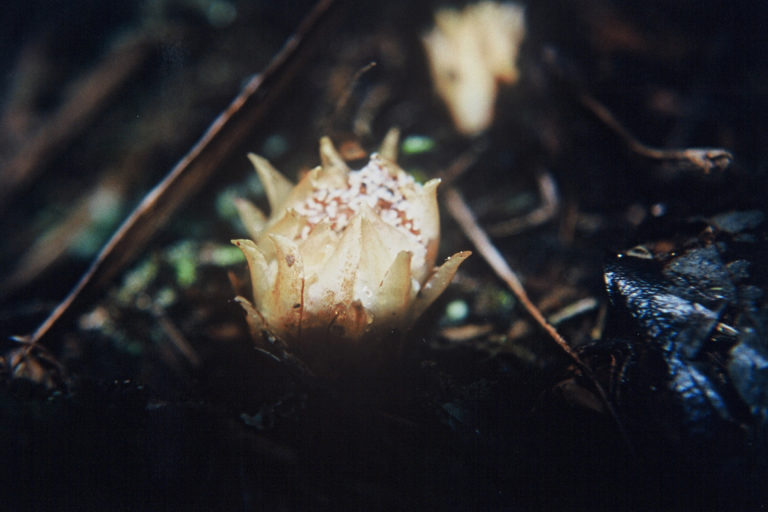From vibrant green geckos to elusive Hochstetter’s frogs, Northland is home to a diverse and unique range of native plants and animals. Of course, you are probably familiar with some of our more well-known species such as the North Island Brown Kiwi, the Kauri Snail, the Kererū (Kūkūpa in Northland), or the giant Kauri tree, but we think some of our lesser-known species are just as awesome and deserving of attention!
Northland Green Gecko/Kawariki
The Northland green gecko is locally known as kawariki. These vibrant reptiles can be found from Hokianga Harbour to the Bay of Islands and south towards Houhora Harbour.
You can identify kawariki by their bright green body, red tongue and distinctive blue mouth.
Kawariki are active both day and night and can often be seen basking in the sun on warmer days. While primarily tree-dwelling, they may occasionally be spotted on lower shrubs. These critters have been known to live up to 25 years, but it’s expected that they can live even longer! They give birth to only one or two young each year.

New Zealand Native Flax Snail/Pupuharakeke
The New Zealand Native Flax Snail, or Pupuharakeke, inhabits broadleaf forest habitats. Pupuharakeke can grow up to an impressive 115 mm and boast a lifespan of up to 20 years. Once widespread in Northland, their populations are now severely restricted due to human activities and habitat loss as well as being preyed on by rats, pigs and birds.
To help the pupuharakeke population, farmers can fence off areas of bush where they are present. This can stop stock from accidentally standing on and crushing them. Rodents and pigs prey on pupuharakeke, so rodent control (by poison or trapping) and pig control are also helpful ways to protect them.

Wood Rose
New Zealand’s Wood Rose is a captivating parasitic flowering plant relying on the endangered short-tailed bat for pollination. The Wood Rose’s late winter bloom secretes glucose-rich nectar, a sought-after delicacy for bats and unwelcome guests like possums and rodents. Unfortunately, this has limited the wood rose’s once-expansive range. Researchers Zenon Czenze and Tertia Thurley discovered that rain not only dampens the flowers but also impacts bat activity. To spot this elusive beauty, keep an eye out for its unique late February to early May flowering period.

North Island Kōkako
The North Island kōkako is a large, blue-grey songbird bird with distinctive bright blue wattles at its throat. Often heard more than seen, these birds belong to the ancient New Zealand wattlebirds family, which includes the extinct huia.
The song of the kōkako is complex, and they defend their territory by singing. They might be talented singers, but the kōkako are poor fliers and prefer to bound through treetops on their strong legs.
The kōkako is a conservation success story for New Zealand and demonstrates how pest and predator control can save declining native species. Thanks to a huge conservation effort across the North Island by many environmental groups, the North Island kōkako population has grown from 300 breeding pairs in the 1990s to over 2,000 breeding pairs today.

Hochstetter’s Frog
Hochstetter’s frogs enjoy watery climates around Northland but their tiny size makes them hard to spot. While they may be small (with a maximum length of 50 mm) they have a big lifespan, and have been known to live up to 40 years!
Native frogs such as the Hochsetter’s frog are distinguishable from their introduced counterparts as they do not croak! Not only are they quiet, but they also don’t have eardrums. Instead, to find a mate they use pheromones.
Habitat destruction, predation from introduced species, and the impact of feral pigs pose threats to the Hochstetter frog.
Although there is a lot still unknown about these frogs and their reproduction, Hamilton Zoo is running a breeding programme to try to learn more and help protect them.

Help protect our native species’ home
Our native species remind us of the importance of being kaitiaki for our environment. As you enjoy summer outdoors in Whangārei, take a moment to look around and appreciate the unique wildlife found here, and perhaps think about something you can do this year to help these species.
One way to help native species is to start backyard trapping. Here are some easy steps to learn more about how to start trapping in your backyard.
Find out about Native Birds You Might Encounter in Northland



